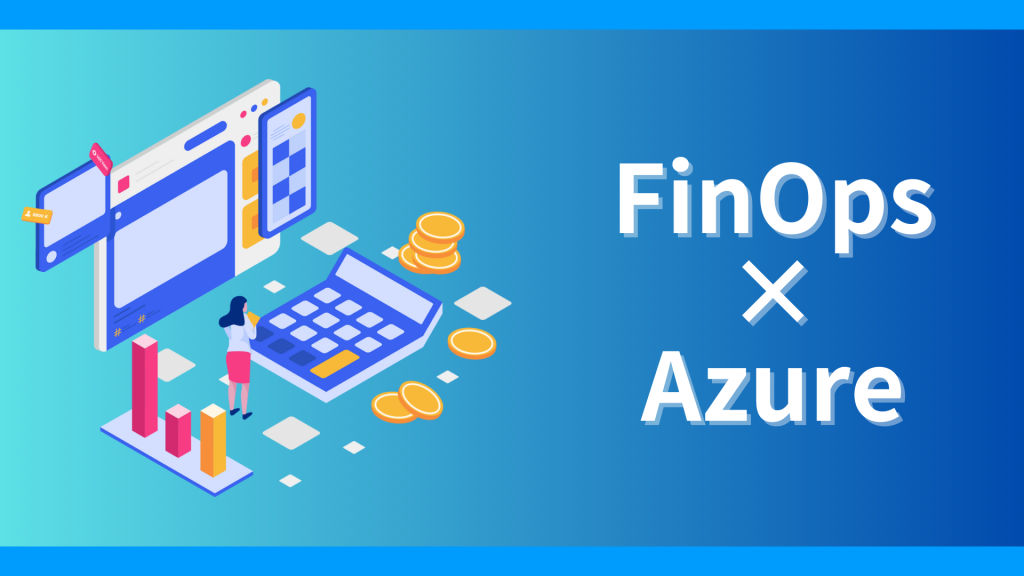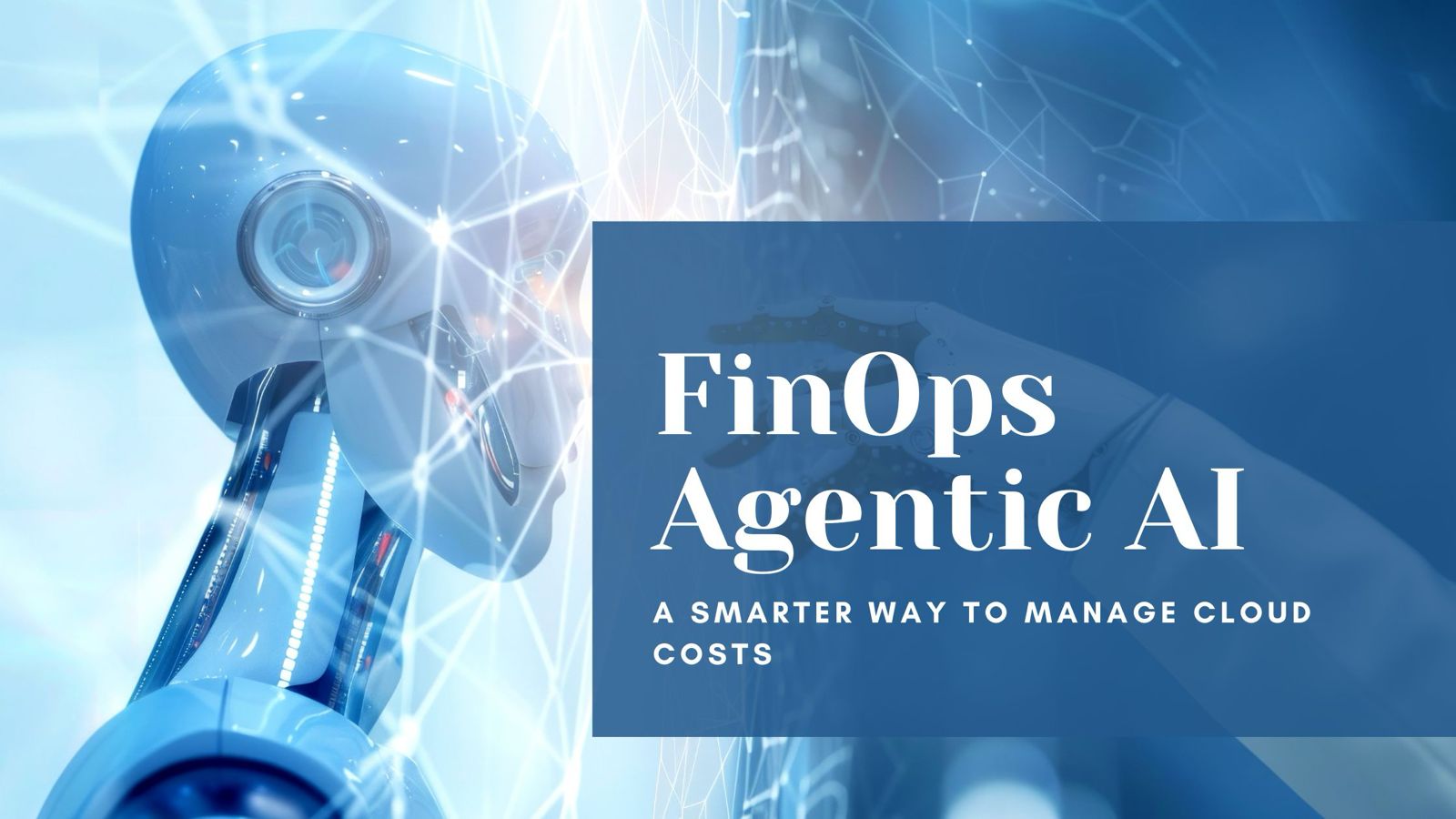A growing trend helping businesses regulate and cut their cloud expenses is FinOps. Teams from Finance, Engineering, and IT Operations are brought together to work closely, understand where the money is going, take accountability, and make wise decisions, enhancing company performance.
Many firms are now using FinOps to control their growing cloud costs as cloud technology becomes a basic component of how contemporary enterprises work.
Utilised by 70% of firms worldwide and 95% of Fortune 500 companies, Microsoft Azure is among the most often-used cloud platforms available. Keeping cloud expenditures under control can be a genuine difficulty, though, given the variety of services and sophisticated infrastructure offered. Having a specific Azure FinOps solution is therefore rather crucial, since it enables businesses to monitor expenditure, maximise use, and prevent surprises in their cloud costs.
5 Best Azure FinOps tools for Cost Optimization
1. Microsoft Cost Management + Billing
Tracking and managing your Azure cost mostly depends on Microsoft Cost Management + Billing. It’s a built-in service; hence, further setup or expenses are not something to worry about; all Azure users by default have this. For many companies just beginning their FinOps path, this tool provides a simple approach to obtain awareness of cloud consumption and costs.
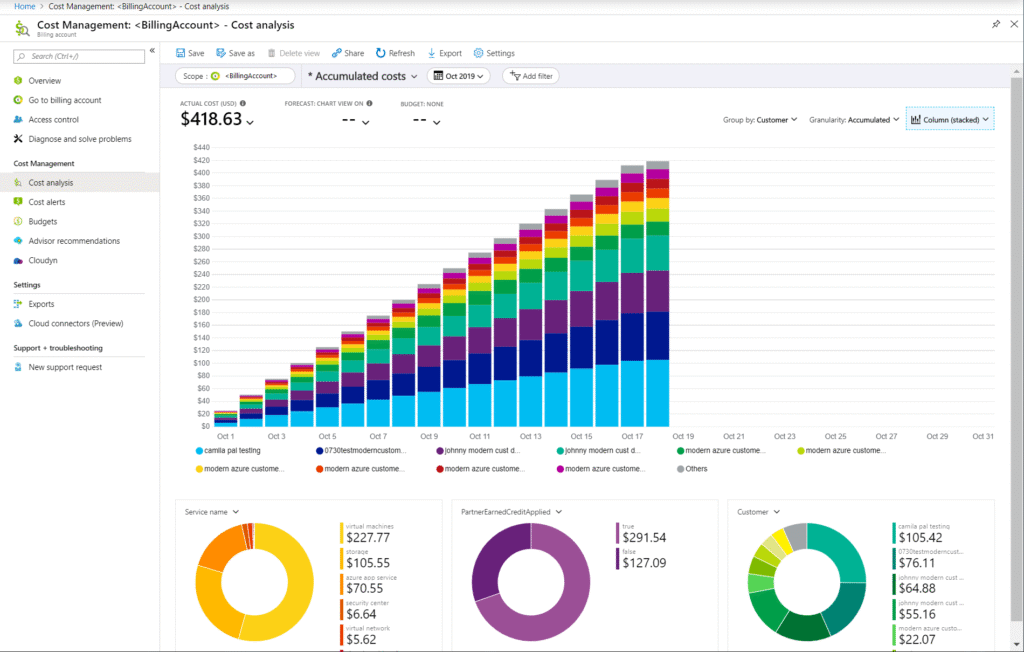
Microsoft Cost Management lets you see where and how your money is being used, whether you run a big company with several subscriptions or a startup attempting to keep within budget. Cross-functional teams, including Finance, DevOps, and IT, would notably benefit from it if they wish to stay aligned with cloud spending targets.
Features
- Track your cloud usage and expenses in real time to be certain they align.
- Establish personal budgets and stay informed when you’re on the verge of meeting them.
- Forecasting: Based on past performance, project future expenses.
- Using tags, break up expenditure by department, project, or resource group.
- Create sophisticated visualisations and reports for more in-depth financial analysis by integrating Power BI.
- Also supports AWS billing when coupled with Azure.
Any company trying to include responsibility and openness into its cloud spending has a strong basis from this technology.
Best for: Native Azure cost tracking and forecasting
- Built into Azure at no extra cost
- Visual dashboards for usage and spending
- Budget alerts and cost forecasting
- Integrates with Power BI for deeper insights
✅ Great for Azure-native users
❌ Limited advanced automation features
2. CloudHealth by VMware
VMware CloudHealth is a complete cloud management tool that enables companies to take control over their cloud spending and maximise resource use.

Across multiple cloud environments—including Azure, AWS, and Google Cloud—it offers a centralised approach for controlling expenses, ensuring governance, and improving operational efficiency.
CloudHealth helps companies to make educated decisions, match cloud investments with corporate objectives, and promote cooperation among finance, operations, and engineering teams by providing comprehensive insights and automation capabilities.
Features
- It provides a consistent view of cloud resources and expenses across many platforms, therefore enabling improved management and decision-making.
- It provides practical advice on rightsizing resources, eliminating waste, and using reserved instances to lower costs.
- Governance and Compliance: This section provides the means to develop policies that uphold security requirements, ensure compliance in cloud environments, and enforce best practices.
- Custom Reporting and Dashboards let customers create customised reports and dashboards with insights into cost drivers and use patterns for several teams or initiatives.
- Based on past data and usage trends, budgeting and forecasting help to set budgets, monitor spending, and project future costs.
- Real-time, irregular spending patterns found by anomaly detection allow quick analysis and correction to stop budget overruns.
For companies trying to apply efficient FinOps techniques, CloudHealth by VMware is a must-have product since it guarantees operational excellence and financial responsibility in their cloud solutions.
Best for: Multi-cloud cost optimization
- Supports Azure, AWS, and Google Cloud
- Detailed cost reports, rightsizing, and governance
- Policy-driven recommendations and alerts
- Custom dashboards for finance and engineering teams
✅ Ideal for large enterprises with multi-cloud setups
❌ Premium pricing
3. Apptio Cloudability
Apptio Cloudability is a strong cloud financial management tool designed to help companies clearly understand their cloud expenditure and maximise expenses across several cloud providers, including Microsoft Azure, AWS, and Google Cloud. Aligning with FinOps concepts guarantees that cloud investments are both effective and in line with corporate goals, therefore fostering cooperation among finance, engineering, and operations teams.
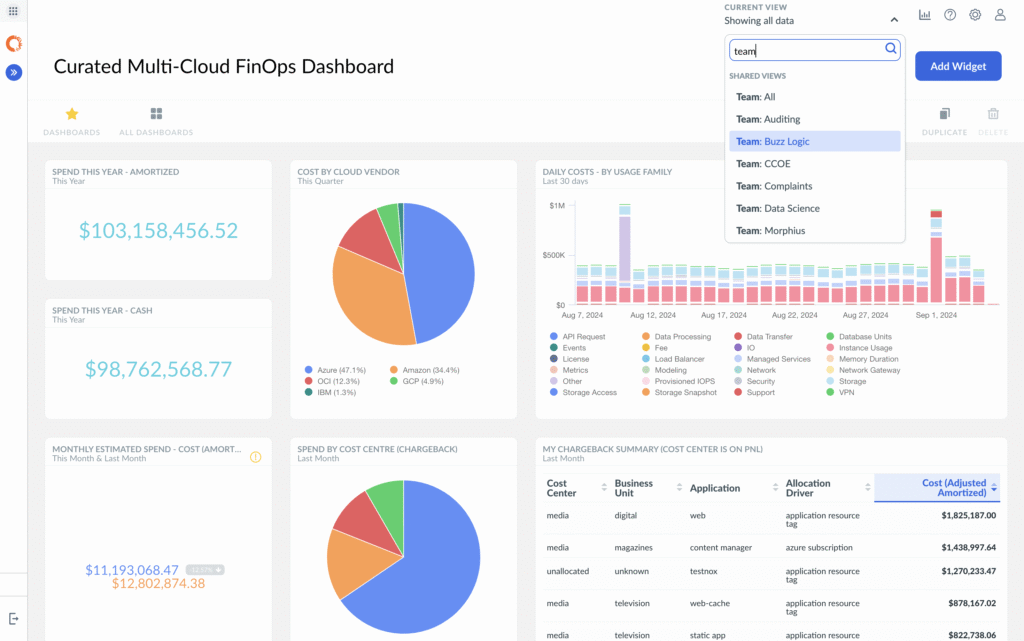
Cloudability provides a centralised way for companies to negotiate the complexity of multi-cloud setups to track consumption, assign expenses fairly, and apply cost-saving techniques. Its simple dashboards and automated recommendations help teams make wise decisions and promote financial responsibility all over the company.
Features
- Multi-Cloud Cost Visibility lets Azure, AWS, and GCP’s cloud costs all be seen together, therefore facilitating thorough tracking and analysis.
- Cost Allocation & Chargeback: Encouragement of openness and responsibility by allowing exact distribution of cloud expenditures to particular departments or initiatives.
- By means of an analysis of consumption patterns, rightsizing recommendations for ideal resource configurations help minimise waste and control costs.
- Real-time anomaly detection of odd expenditure patterns makes quick corrective action possible.
- Customisable dashboards and reports designed for different stakeholders enhance decision-making, which is facilitated by Dashboards & Reporting.
- Cloud Providers: Ensuring consistent data and simplified operations, seamlessly connect with main cloud platforms.
Apptio Cloudability helps companies to take charge of their cloud budgets, therefore ensuring that every dollar spent supports strategic goals.
Best for: FinOps maturity and automation
- Strong financial accountability features
- Tracks cloud unit economics and ROI
- Automates budgeting and chargebacks
- Azure-specific views and tagging support
✅ Trusted by Fortune 500s
❌ May require onboarding support for full value
4. Spot by NetApp (formerly CloudCheckr)
Designed to help companies maximise their cloud infrastructure and lower their expenses, Spot by NetApp is a complete cloud management platform that includes Cloud Checkr’s capabilities. It offers automated tools and practical insights that let companies properly run, control, and scale their cloud systems.
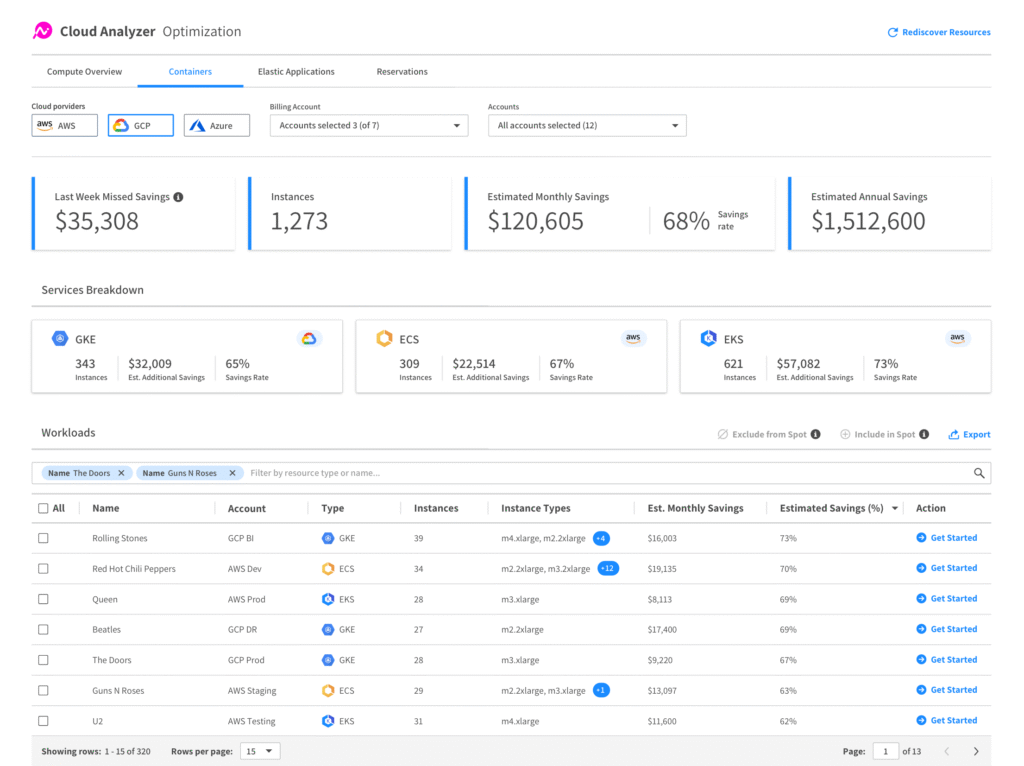
Supported by big cloud providers such as Microsoft Azure, AWS, and Google Cloud, Spot by NetApp is specifically designed for businesses and managed service providers trying to improve their FinOps processes.
Features
- Multi-cloud visibility improves management and decision-making by providing a consolidated view of cloud resources and expenses across several platforms.
- Identify chances to right-size resources, cut waste, and use reserved instances to lower costs.
- Policy implementation will help to enforce best practices, preserve security standards, and guarantee compliance across cloud environments.
- Create customised reports and dashboards that offer insights on cost drivers and use trends for various teams or initiatives.
- Based on past performance and usage trends, set budgets, monitor expenses, and project future costs.
- Real-time identification of odd spending trends will enable quick enquiries and corrections to stop budget overruns.
Best for: Real-time optimization and automation
- Auto-scaling and workload automation
- Deep cost analytics for Azure environments
- Reserved instance planning and cost savings tips
- Policy management for FinOps governance
✅ Helps reduce costs actively
❌ Can be complex for smaller teams
5. Kubecost
Designed specifically to let teams in Kubernetes settings control and maximise expenses, Kubecost is Kubecost offers real-time data on your resource use and related expenses whether you’re running apps on Azure Kubernetes Service (AKS), Amazon EKS, Google Kubernetes Engine (GKE), or on-site clusters. Giving engineers, DevOps, and finance teams thorough insight into where your cloud budget is going helps them to work together efficiently and make wise decisions to cut waste of money.

Kubecost is easy to install; Helm will help you to set it up in a few minutes. Once installed, it effortlessly connects with your current Kubernetes system to offer dashboards and analytics, including cost breakdown by name-based deployment, service, environment, and more. Without sacrificing performance, this detailed awareness enables teams to find inefficiencies, manage resources effectively, and apply cost-cutting tactics.
Features
- Track your Kubernetes spending as it occurs using up-to-date resource use and cost data.
- Break down costs by pod, label, deployment, or name so you know exactly where your budget is being used.
- Enhancement Receive practical advice to right-size resources, cut waste, and raise cluster effectiveness.
- Budget Alerts: Establish spending limits and get emails or Slack alerts when nearing or beyond budgets, therefore preventing unanticipated overruns.
- Track expenses across several settings, including Azure, AWS, GCP, and on-site Kubernetes clusters.
- Working with Prometheus and Grafana lets you add cost data to your current monitoring and visualisation systems.
For companies trying to introduce financial responsibility to their Kubernetes operations, Kubecost is a great instrument since every dollar invested helps to produce value.
Best for: Azure Kubernetes (AKS) cost visibility
- Focuses on Kubernetes workloads
- Real-time cost breakdown by namespace, pod, label
- Open-source and enterprise versions available
- Integrates well with AKS and Helm
✅ Must-have for containerized workloads
❌ Limited if you’re not using Kubernetes
What advantages exist from applying Azure FinOps tools?
Using Azure FinOps technologies primarily helps businesses improve their control over cloud expenses. Savings of money are only one advantage, though. A solid FinOps application provides your staff with the visibility and insights required to control cloud expenditure more effectively across several departments.
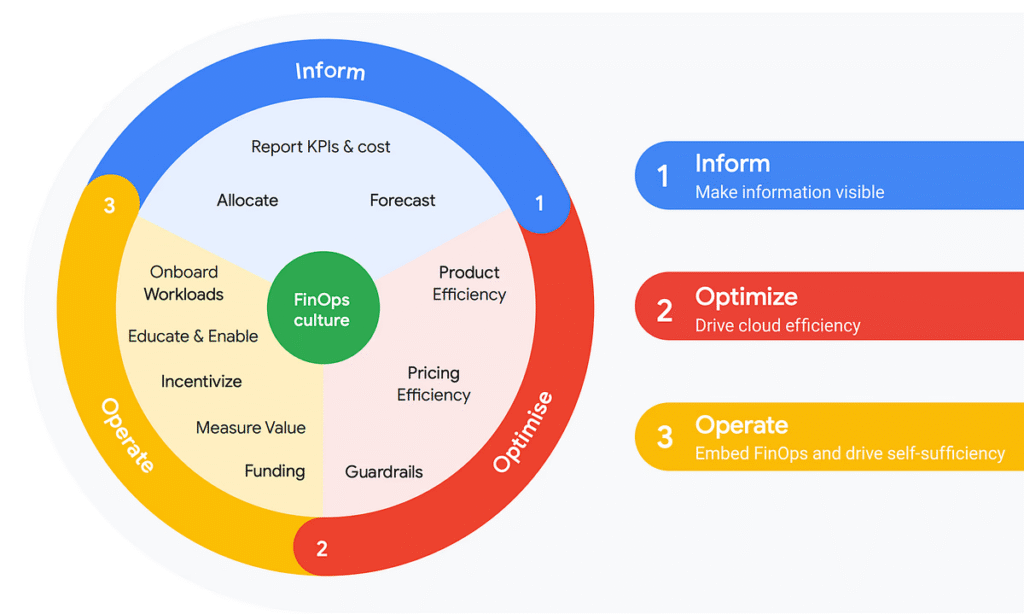
Let’s separate the main advantages:
Improved financial clarity
Engineers and financial teams sometimes view cloud expenses differently. A standard Azure bill with total use will not provide the information they require.
By client, department, project, or even feature, Azure Finops capabilities enable teams to precisely identify what is causing the expenditure and respond where necessary, therefore helping to reduce down expenses.
Increased responsibility
Suddenly rising costs can make it difficult to determine why. Track which resources were used, who provisioned them, and how they were configured using Finops tools. This openness enables developers and engineers to be more conscious of the financial consequences of their choices, therefore promoting wiser use.
Improved Cost Control
Many businesses overspend on resources that aren’t completely utilized—especially virtual machines (VMs) left operating during off-hours. Using the correct FinOps tool will enable you to automatically scale down or turn off idle resources, saving you money without requiring human labour.
Thoughts on Final Notes
We examined in this post why FinOps is important for controlling Azure cloud costs and how the correct tools can significantly impact things. We also compiled a list of the best Azure FinOps tools featuring visibility, responsibility, and cost control capabilities.
The best instrument available to you at the end of the day is one that aids your team in making wiser financial decisions for your company and suits your requirements, helping to lower waste.
Ready to optimize your cloud infrastructure?
Partner with Silex Cloud Solutions – your trusted expert in affordable cloud consulting.

